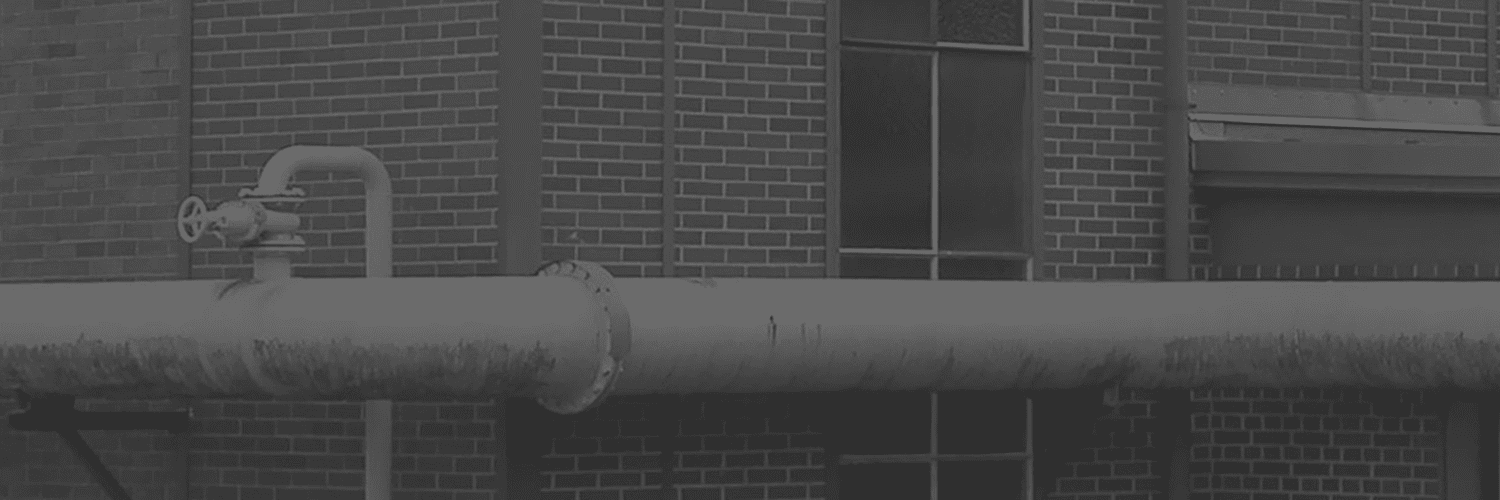
Due to extensive experience in the field of computational fluid dynamic (CFD) simulations by Schwartze id.vt as well as within the team of AVEREM, there had been a desire to include a cloud-based CFD solution in the companies’ software toolbox. They wanted to focus on supporting a range of smaller projects, to ultimately improve engineering without requiring a large budget for it. Yet, the high license cost of traditional, on-premises CFD software made profitability seemingly difficult. This was until they discovered the SimScale platform.
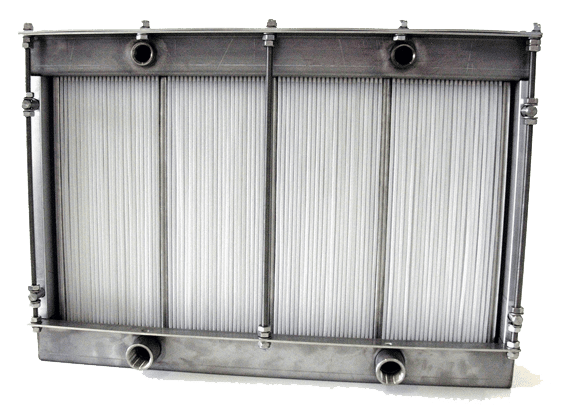
Because SimScale is cloud-based, traditional cost barriers such as hardware, software installation, and maintenance were avoided. This gave Schwartze id.vt and AVEREM the possibility of offering CFD simulations as an affordable service to their customers.
The teams first used SimScale in a project to evaluate the airflow around vertical tubes, that were covered with an absorption liquid. Due to production limitations, there was a distance of at least 4 mm between the wall of the filter housing and the tubes. There would certainly be shortcut flow. However, the team needed to understand how much of the air entering the filter escapes through the border area, as there were some tubes where the fluid does not pass.
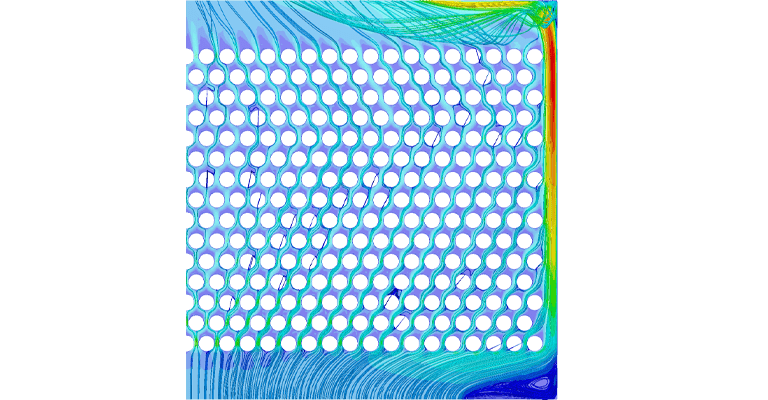
An evaluation was then needed to determine whether the levels of shortcut flow were acceptable or not. In case of too much shortcut flow, device modifications needed to be investigated. CFD simulations with SimScale were the perfect method to solve these questions.
With SimScale, we can show the main flow field properties. This visualization of the results is very helpful, as it allows the client to actively participate in the data interpretation.
Dr. Martin Schottler and Dr. Britta Schwartze
Averem and Schwartze id.vt
A CAD model for the tubes and the housing was created and uploaded in SimScale. The automated mesh generation for internal flow resulted in a mesh that could directly be used for the flow simulations. All required boundary conditions and models were set and the simulation was performed on 8 nodes. The desired accuracy for the numerical solution was reached after about one hour. The flow field was then analyzed in ParaView.
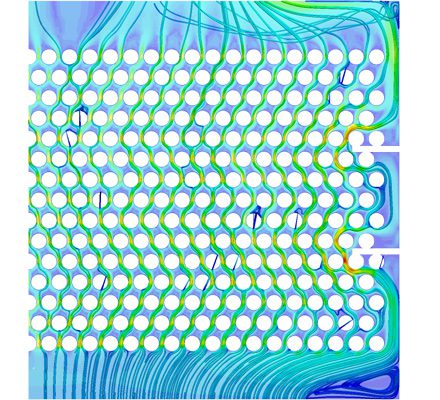
The CFD simulations have been validated by manual estimation of mass flow through the border area and a comparison to empirical fluid flow through filter tubes. Investigating velocities and streamlines of the flow field showed the need for device modifications at the filter housing. A suggestion was to put metal sheets at the wall in order to break the border flow. The metal sheets were included in the geometry and CFD simulations have been performed. The new concept showed a more uniform flow field and an acceptable level of shortcut flow which overall results in higher performance values of the filter.
Schwartze id.vt and AVEREM process engineering work together to help smaller companies that do not have sufficient CFD capacities inhouse investigate flow engineering. Since the time of this early project, there have been many examples of successful support from SimScale for the design and operation of gas and liquid flow installations.
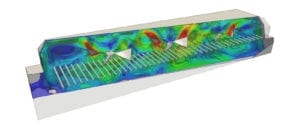

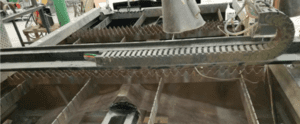

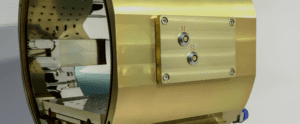
Sign up for SimScale
and start simulating now